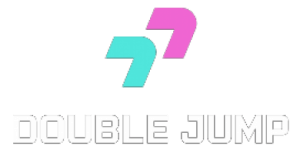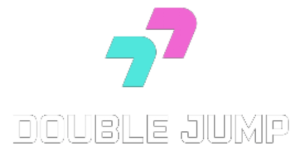Reasons for Failure
Raising funds for a project through crowdfunding can be a difficult and daunting task. Unfortunately, it is not uncommon for projects to fail to meet their fundraising goals. There can be numerous reasons why an IndieGoGo project fails and it’s important to understand them in order to avoid failure.
Here we will explore the various causes of IndieGoGo project failure.
-
- Lack of Preparation
- Poorly Defined Goals
- Inadequate Promotion
- Insufficient Rewards
- Poorly Designed Campaign Page
- Inadequate Follow-Up
Poor Planning
Poor planning is one of the most common causes of failure. When organizations or individuals are not prepared for the challenges or realities of a given situation, chances for success are much lower. Planning involves understanding what must be done and when, who will do it, how it should be handled and other critical details.
Without careful planning, organizations and individuals may struggle to fulfill their goals due to lack of resources and inadequate supervision or oversight.
Additionally, poor planning can create unnecessary risks that can be difficult to manage. Failure to identify potential threats ahead of time can leave a team or individual vulnerable when those risks become reality. Taking the time to plan for various contingencies can help reduce uncertainty and decrease chances for errors or mistakes in execution.
Other aspects and implications of poor planning include:
-
- Unclear goals
- Inefficient processes
- Poor use of resources
- Lack of coordination between departments
- Poor access to resources
- Low morale among team members due to lack of focus on objectives
Lack of Promotion
One of the most common reasons why projects fail to reach their funding goals is that they are not promoted adequately. If you don’t spread the word about your project, people won’t know about it and will be less likely to contribute.
When you launch your campaign, make sure you share it in all possible channels – social media, newsletters and blog posts. The best way to get people interested in your project is to create engaging content and keep your community up-to-date with changes or new developments related to the project.
In addition, there are a number of crowdfunding-specific promotion tips that may help increase funding for your campaign. For example:
-
- Leverage rewards from influencers in your space
- Invite friends and family to back the project
- Ask bloggers or influencers with many followers if they would like to review or promote the project in exchange for a reward, etc.
Finally, consider running external marketing campaigns such as Google AdWords or Facebook Ads as another way to generate attention and attract potential backers.
Unclear Goals
Creating a project on IndieGoGo means setting clear and achievable goals that benefit the project creator, their backers and their community. When it comes to crowdfunding projects, having unclear goals, a lack of understanding of expenses and end goals are some of the top reasons why a project fails.
Your goal should provide enough explanation that potential backers understand what you’re raising funds for, why it’s important, how much you need to raise and what you will do with the money once achieved. The clearer your goal is, the more likely you are to successfully attract support from your target audience and have them contribute financially. Being prepared to answer common questions about any project can also ensure that there is an open line of communication between backers and the project creator.
When setting objectives for an IndieGoGo campaign, it’s important to ensure that there is a tangible benefit in sight for potential backers or investors. As part of clarifying one’s objective, researching the competition can reveal opportunities for improvement or help anticipate any potential risks that may arise during execution.
Project creators who articulate clear plans tend to attract more investment due to added trustworthiness in comparison with those who don’t offer anything grounded in reality—motivating people won’t be enough if where they invest their money isn’t evident in some degree up front. Mapping out these details sets up a strong foundation—planning these aspects before launching a campaign ensures an overall better thought-out product in the long run.
-
- Set clear and achievable goals
- Explain what you’re raising funds for
- Ensure there’s a tangible benefit
- Articulate clear plans
- Research the competition
- Plan ahead
Consequences of Failure
When running an IndieGoGo campaign, there can be a potential risk of it not meeting its fundraising goals. This could lead to a number of consequences, ranging from financial losses to reputation damage. This article will explore the different potential consequences of failure when running an IndieGoGo campaign.
-
- Financial losses
- Reputation damage
The following are some of the potential consequences of failure when running an IndieGoGo campaign:
-
- Loss of capital invested in the campaign
- Loss of time and resources used to create the campaign
- Negative publicity from failed campaigns
- Loss of trust from potential donors
- Diminished credibility for future campaigns
Loss of Funds
For IndieGoGo, if your campaign does not meet its goal by its deadline, all your backers will be refunded within 5-7 business days. However, there is an option of flexible funding that allows you to keep the money raised even if it doesn’t hit its goal. However you must be able to fulfill the perks you promised backers without the total amount of money. If not, it can cause serious issues for you down the road.
Loss of Reputation
When a project fails on IndieGoGo, it can be devastating, especially to the reputation of the person or organization behind it. The failure raises questions about who was behind it and if they can be trusted with funding. That’s one reason why successful crowdfunding backers strive to create campaigns that will go the distance. Not only do they need to prove their trustworthiness, but also that others are willing to put their money where their mouth is and back something that could take months or even years before coming to fruition.
In addition to hurting a creator’s reputation, a failed IndieGoGo project can also be an economic loss for all involved. People have gone through the effort of setting up a campaign page, creating rewards incentives and marketing their offers; however, in the end none of this effort may have been enough for their campaign to succeed.
Finally, creators should be aware that failed IndieGoGo campaigns may extend beyond them as third-party vendors and advertisers are likely not seeing any return on investment when campaigns don’t reach their goal. These associated losses can further burst the bubble of dreams if extra caution isn’t taken in planning out projects ahead of time.
Loss of Momentum
Failure can be a powerful learning tool if you learn from the experience and strive to do better. But when failure is not turned into opportunity, it can lead to a loss of momentum and discourage further attempts. This can have direct consequences on your career path and other areas in life.
If you are unable to pick yourself up after a failure, it may signal difficulty with moving on from previous mistakes and completing future goals. For example, if you have difficulty recovering from losses in an athletic competition or have multiple failed attempts at trying out for a team, it could negatively impact your chances of achieving the next level in your chosen sport.
In terms of professional development, if continued failure is experienced across several projects or initiatives within an organization, there may be a general lack of confidence in skills or knowledge which can heavily limit career progress. This could also lead to reduced performance within the workplace as well as limiting potential job opportunities when looking elsewhere.
Additionally, loss of momentum due to failure can cause an individual to feel stagnant and unmotivated which can then lead to bigger issues such as depression or anxiety. Therefore, it’s important that any instances of failure are viewed as learning experiences and that progress is tracked through small successes which will ultimately allow individuals to:
-
- Restore their momentum
- Continue striving towards their goals
- Overcome any setbacks they face
How to Avoid Failure
Launching a successful crowdfunding marketing campaign on IndieGoGo requires a lot of time, effort and dedication. There are many pitfalls to avoid in order to ensure a successful campaign, and it can be difficult to know where to start.
In this article, we’ll discuss what happens if an IndieGoGo project fails and how to avoid failure when launching an IndieGoGo campaign.
-
- Understand the goal.
- Know your audience.
- Create a compelling video.
- Choose the right reward levels.
- Promote your campaign.
Set Realistic Goals
Setting realistic goals and expectations will help you avoid failure as an IndieGoGo campaigner. Plan ahead and develop a clear timeline for yourself and your team. Make sure that all efforts in creating the campaign are catered to meet the needs of your target audience. Do research on which platforms will bring in more returns for the campaign and focus on those networks.
It is also essential to set up concrete goals with measurable outcomes, such as reaching a certain number of backers, funding goal amount, or returning profits. Clearly define when these goals should be met and go into detail about achievable objectives that need to be completed before the end of the fundraising period. All objects must be realistic given resources, time, man-hours, etc., so it is important to have an understanding of what can feasibly be accomplished within that timeframe.
Once you have determined your goals and established achievable targets, create tactics around them — like pricing strategy or rewards structure — that will help you attract support and reach necessary objectives.
-
- Set realistic goals and expectations
- Develop a clear timeline
- Cater to the needs of your target audience
- Focus on the platforms that will bring in more returns
- Set up concrete goals with measurable outcomes
- Create achievable objectives
- Create tactics like pricing strategy and rewards structure
Promote Your Campaign
Promotion and outreach are key components of any successful IndieGoGo campaign. It is important to use a variety of tools and strategies to reach a wider audience, and you should begin making connections well before launching.
Build your following in advance as much as possible by creating social media accounts, utilizing email campaigns, and connecting with influencers. When the time comes to launch your campaign, use the power of these profiles to spread the word about your offering. Launching the project should be an event that is celebrated everywhere in your network and beyond.
You can also reach out to potential backers through press releases, forums and other types of content marketing tactics such as guest blogging or video production. The idea is to be creative in spreading buzz about your campaign. Utilizing already built relationships or building new ones in unconventional ways can lead to powerful promotional efforts that will raise awareness for your project.
It’s important that you remain confident in yourself and what you’re doing throughout this process, because people will follow leaders who are driven towards success; exhibiting tenacity and a sense of purpose will attract attention from potential backers who want to contribute their start-up stories on IndieGoGo.
Monitor and Adjust
When running an IndieGoGo project, it is important to monitor your progress, ratio of successful and unsuccessful transactions, feedback from your backers, and any other key indicators that can help you fine-tune the campaign. Being consistent in your efforts and promoting your project on a regular basis is necessary for success; as awareness builds up for your campaign, you should begin noticing small trends in terms of behavior of supporters who have interacted with the campaign.
These trends will help you steer away from failure by allowing you to adjust the different parts of your project according to people’s reaction.
Additionally, responding to feedback is essential as it allows backers to become more engaged with the fulfillment process and generate more interest towards promising projects.
Having good communication between yourself and potential backers also provides visibility into how completely invested you are into creating a successful crowdfunding experience.
What to Do If You Fail
Creating an IndieGoGo campaign can be a huge undertaking. Whether you’re looking to raise money for a new product or an upcoming event, crowdfunding can be a great way to get the money you’re looking for. Unfortunately, sometimes things don’t go according to plan and your campaign might fail. What happens then? In this article, we’ll discuss what you can do if your IndieGoGo campaign fails, and how you can handle the situation in a positive way.
Step 1: Take a Step Back
Step 2: Analyze Your Campaign
Step 3: Adjust Your Goals
Step 4: Re-Launch Your Campaign
Step 5: Promote Your Campaign
Step 6: Consider Other Options
Reach Out to Donors
If your IndieGoGo project fails to reach its goal, it is important to stay in touch with the donors who contributed. Acknowledging their help and explaining what’s wrong can prevent a lot of frustration for both sides. Let them know about failed milestones, challenges you faced and future plans.
You may have a follow-on fundraising plan, you may choose to scale back your project or offer refunds to backers without any questions asked. Develop trust with donors by communicating often and transparently. Meanwhile, keep existing expenses low by deactivating perks until a revised plan is created and communicated to backers.
You can also look for more opportunities elsewhere like:
-
- Grants
- Pitching ideas to investors who are interested in the same industry
- Crowdfunding a second time
Focus on producing content that showcases how you were able to make improvements from the initial failure in order to inspire confidence among potential supporters. In any case, let your backers know what secondary steps you are taking so they are part of your team and onboard with all decisions made along the way.
Analyze What Went Wrong and Adjust
If you’ve run a failed IndieGoGo campaign, the first and most important thing to do is to analyze what went wrong so that you can adjust if needed and make sure it doesn’t happen again. Take some time with your team, or seek out trusted feedback from your supporters, to reflect on the project and assess where errors occurred. Doing so will help you be more prepared for a more successful next campaign.
Common reasons that IndieGoGo projects fail include:
-
- Preparing too late or not properly researching what makes a successful crowdfunding campaign
- Having an unrealistic time frame and financial goal
- Choosing the wrong reward levels and pricing them too high or too low
- Not expanding your reach beyond your friends and family
- Lacking transparency in communication to donors
- Not using existing relationships (introducing potential customers to what you’re doing)
- Spending money foolishly or not having enough working capital for the duration of the fundraiser
- Not capturing enough emails for future follow up so those who were interested were never reminded during the project
- Not understanding who supports crowdfunding in general
Contact Us
Fill out the form below and we will be in touch shortly! Looking for employment or contract opportunities? Use this FORM instead.
follow us on instagram @DOUBLEJUMPMEDIA



